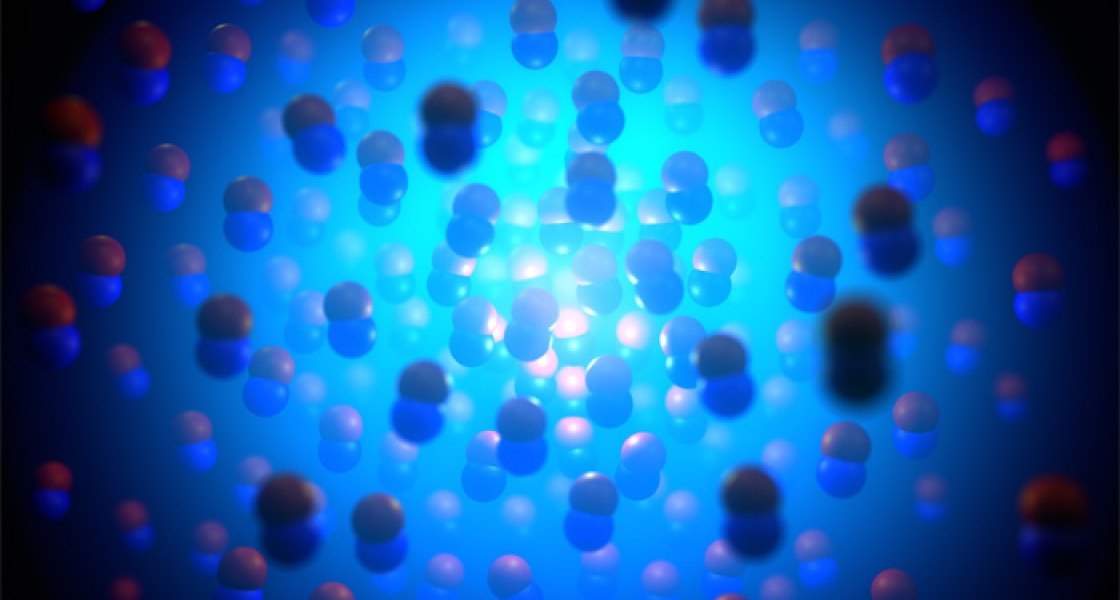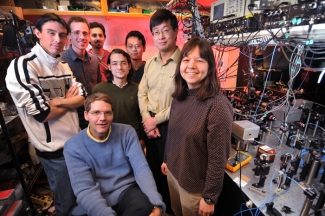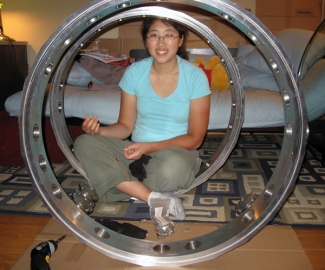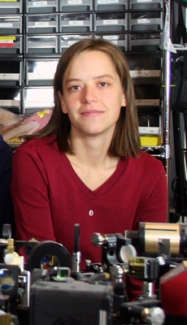At ultralow temperatures, the molecules manifest themselves mostly in quantum mechanical waves, instead of behaving like ordinary particles. The molecular waves extend long distances inside a gaseous cloud. The behavior of molecules at ultralow temperatures includes chemistry, but chemistry in a strange world where the laws of quantum mechanics prevail.
The team observed molecular interactions that led to the breaking and formation of chemical bonds between atoms. These observations were possible because the researchers were able to control every aspect of the energy and motion of the molecules.
"What controls ultracold collisions is the nature of the molecules themselves," Ye said. "It depends on whether the molecules are fermions or bosons."
Neighborly bosons happily pile up in the same place at ultralow temperatures. When bosons get close to each other, they collide, forming new chemical bonds or breaking old ones. In contrast, the independently minded fermions cannot share the same piece of real estate. So when these standoffish molecules approach each other, they can only get so close before they start warily circling around each other. But even so, some pairs of these molecules can still manage to slowly form new chemical bonds.
"At some point while fermionic molecules are dancing around each other, the molecules may quantum mechanically tunnel through the barrier between them and undergo a chemical reaction," Jin explained. She added that her work with Ye and Bohn has shown that the chemistry of ultracold molecules is far richer than anticipated.
For instance, the team was able to adjust its experiment to allow collisions between KRb molecules, all of which are fermions. The secret was preparing two groups of KRb molecules that were different from each other in terms of the energy state of their nuclei. Both sets of molecules were still fermions, but they were no longer identical. In this system, the identical fermions that got close together still circled around each other as before. However, nonidentical fermions collided with each other head on, resulting in reaction rates that were 10–100 times faster.
At first, it surprised Jin and Ye that such relatively fast reaction rates could occur at ultralow temperatures. However, they realized that these molecules are like waves and can overlap with each other even when they are far apart.
"When molecules are waves, their sphere of influence is much, much bigger than when they are particles," Ye explained, adding that the collisions and reactions were occurring with pairs of molecules. "When we lower the temperature of KRb molecules even further, we expect to see other exotic quantum-mechanical behaviors, including chemical reactions influenced by an entire gas in a collective fashion."
The next step, however, was an investigation of KRb collisions in a modest applied electric field. An electric field can increase the KRb molecules’ electric dipole moment, or charge separation between the slightly more negatively charged K atom and the slightly more positively charged Rb atom. The capability of tuning the strength of the dipole moments is expected to make it possible to control ultracold chemical reactions and create novel ultralow-temperature structures.
With the assistance of theorist John Bohn and his group, the team, now with Ni leading the effort, was able to observe a dramatic increase in the molecule collision rate when an electric field was applied. This rate increase was directly tied to the strength of the induced electric dipole moment in the molecules. The effect was so strong that the creation of a long-lived cloud of polar molecules may require a two-dimensional optical trap to suppress the influence of the attractive head-to-tail dipolar interactions. Nevertheless, these early results showed how long-range dipolar interactions can be used for electric-field control of chemical reaction rates at ultralow temperatures. The work on dipolar collisions in the quantum world was reported in the April 29, 2010, online issue of Nature.
The amazing thing is that the three new experiments reported here make up just the first chapter in an entirely new book being written at JILA on ultralow-temperature chemistry. - Julie Phillips







